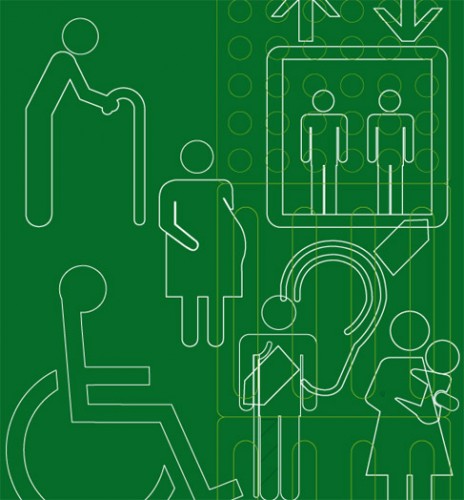Green design is a broad term. In an attempt to narrow it down, we are looking at how green design and “universal design” or lifespan design are linked. First of all, you’re probably wondering what universal design means. Here are the seven principles that define universal design, according to North Carolina State University (check out the link here http://www.ncsu.edu/project/design-projects/udi/):
1. Equitable use
2. Flexibility use
3. Simple and intuitive use
4. Compatible and perceptible information
5. Minimal hazards
6. Minimal physical effort required
7. Size and space appropriate for use
But how are these related to green design? Focusing on numbers 1, 2, and 7 will show how green design and universal design are similar. Being sustainable and “green” are all about sharing, being resourceful, and generally creating a solution that can be sustained through changes that may come in the future. According to adaptiveenvironments.org “Green design focuses on environmental sustainability, Universal Design on social sustainability”. However, I think that both environmental and social sustainability are two sides of the same thing – sustainability overall. Sustainability calls for fair outcomes, both for people and the environment. Universal design calls for a sustainable space that can be continually and easily used by people for changing purposes. At the heart of green design is sustainability – using recycled materials, and installing green roofs are all steps towards an overarching goal of conserving resources for the future.
Universal design is about using your existing space for different things. For example, a couple moves into a small house. Then they have two children, but instead of moving into a larger house, they adapt their space to accommodate their children – building an extra room within a larger room, or adding one on. They can also child proof their house with simple amenities such as adjustable counters, or by adding carpets. Basically, both green design and universal design are about using what you have and working with it.
If you would like more information about the concepts of green building and universal design, check out Yes! Magazine at yesmagazine.org, and specifically http://www.yesmagazine.org/issues/sustainable-happiness/how-to-build-a-tiny-house, for an article on green houses and universal design.

